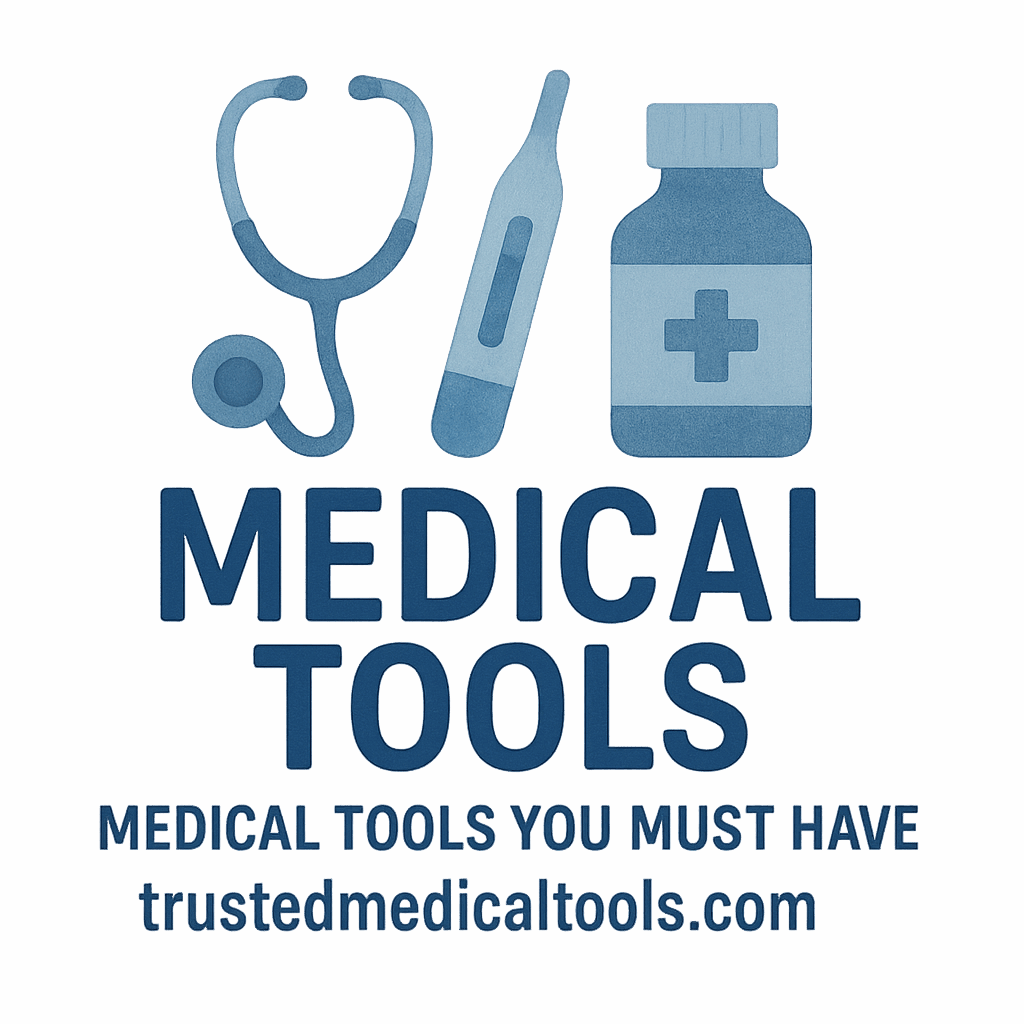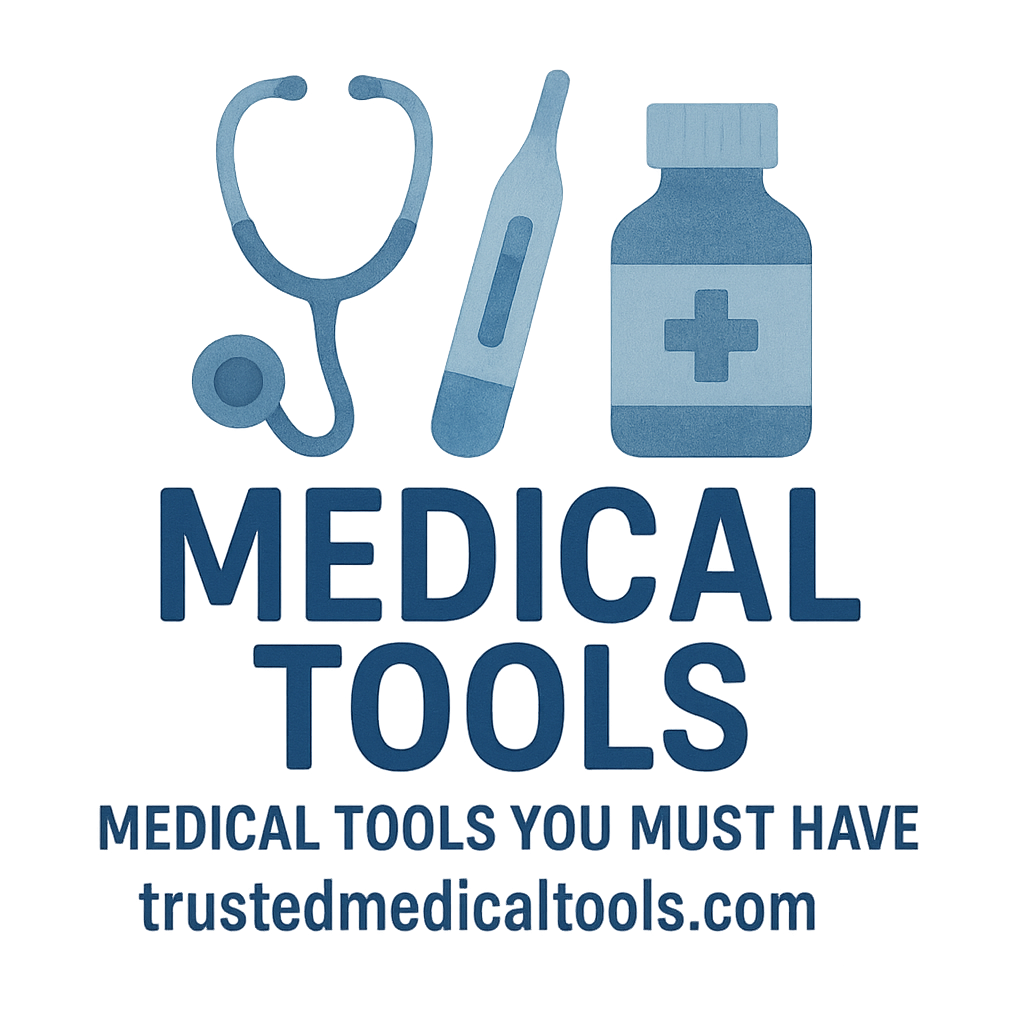Introduction
When it comes to managing your family’s health at home, having the right medical tools can make all the difference. Imagine you have a feverish child, a cut that needs treatment, or an elderly relative managing a chronic condition. Wouldn’t it be comforting to have the tools to take care of these situations without needing to rush to the doctor every time? In this article, we’ll explore the 10 medical tools every family needs for home healthcare. These tools help monitor, treat, and prevent health issues, keeping your loved ones safe and healthy.
Why Home Healthcare is Important
Having essential medical tools at home can help you avoid unnecessary doctor visits, manage minor injuries, and stay on top of chronic conditions. Home healthcare is more than just convenience – it’s about providing proactive care, keeping track of health data, and being ready for emergencies.
With reliable medical tools like thermometers, pulse oximeters, and first aid kits, families can address health concerns quickly. Whether it’s monitoring a fever or managing a health emergency, these tools help you provide immediate care, making your home a safer and healthier environment.
1. Thermometer – A Basic Health Monitoring Tool
A thermometer is one of the most basic yet essential tools in any home. It’s critical for monitoring body temperature and catching fever early, which is often a sign of an infection or illness.
Importance of a Digital Thermometer for Temperature Monitoring
Gone are the days of unreliable mercury thermometers. Today, digital thermometers offer accurate and quick readings, making them perfect for all ages. Digital thermometers can be used orally, rectally, or under the arm for babies, children, and adults. For families, investing in a reliable digital thermometer is a must.
How to Choose the Best Thermometer
When choosing a thermometer, look for features like quick readings, accuracy, and ease of use. You’ll want a thermometer that can give a reading in under 10 seconds, especially if you’re using it for young children. It’s also helpful to have one that’s easy to clean and store.
For a deeper look at how to choose the best thermometer for your family, you can check out this detailed buying guide.
2. Blood Pressure Monitor – Keep Track of Vital Signs
High blood pressure is a silent killer, affecting millions of people without showing symptoms. Having a blood pressure monitor at home allows you to keep track of this crucial health indicator, especially if you or a loved one has a history of hypertension.
Understanding Blood Pressure and Why It’s Crucial
Monitoring blood pressure at home ensures that you can catch changes early, helping you prevent complications like heart disease or stroke. A good blood pressure monitor can help you take proactive steps to manage your health.
Types of Blood Pressure Monitors
Blood pressure monitors come in two varieties: manual and automatic. Manual models require a stethoscope to listen for the pulse, while automatic models are more user-friendly and often provide digital readings.
Check out these doctor-approved tools for monitoring your health at home.
3. First Aid Kit – The Ultimate Emergency Companion
Every household should have a well-stocked first aid kit. From treating small cuts to dealing with burns or allergic reactions, a first aid kit is an essential tool for managing common injuries and health emergencies.
Essentials Every First Aid Kit Must Have
A well-equipped first aid box should include items like bandages, antiseptic wipes, adhesive tape, gauze, and tweezers. For families with young children, include children’s pain relievers, as well as allergy medicine and thermometers.
How to Build a Complete First Aid Kit
You don’t need to spend a fortune on a pre-made kit. You can build your own by purchasing individual items and storing them in an organized container. Ensure your kit is easily accessible and that everyone in the family knows where it is.
For more information on building a first aid kit, check out this article on family care essentials.

4. Pulse Oximeter – For Monitoring Oxygen Levels
A pulse oximeter is a small, non-invasive device that measures the oxygen level in your blood. This is especially useful if someone in your family has a respiratory condition like asthma or COPD, or if you’re recovering from an illness.
The Importance of Oxygen Levels and How to Monitor Them
The device works by clipping onto your finger and using light to detect the amount of oxygen in your blood. By keeping track of oxygen levels, you can determine if a medical intervention is needed.
Features to Look for in a Pulse Oximeter
When choosing a pulse oximeter, ensure that it’s easy to use, accurate, and has a clear display. Some models also offer heart rate tracking, which is an added bonus.
Learn more about monitoring devices here.
5. Stethoscope – Listen to Your Body
A stethoscope allows you to listen to your heart, lungs, and other bodily functions. While it’s often associated with doctors, a stethoscope can also be useful at home for detecting abnormal sounds or rhythms in the heart or lungs.
How a Stethoscope Helps in Monitoring Health
You can use a stethoscope to listen for irregular heartbeats or abnormal lung sounds. If you hear something unusual, you can seek medical advice before the issue escalates.
Choosing the Right Stethoscope for Home Use
When purchasing a stethoscope for home use, look for one that provides clear sound quality. A simple, affordable model is sufficient for general use.
For more on health monitoring tools, check out our collection of wellness tools.
6. Glucometer – Managing Blood Sugar Levels at Home
For families with diabetics, a glucometer is a must-have tool for monitoring blood sugar levels. This small device allows you to take quick readings, ensuring that blood sugar levels stay within a healthy range.
The Need for Regular Glucose Monitoring in Families
Regular monitoring helps prevent high or low blood sugar episodes, which can lead to serious complications. A glucometer is essential for those managing diabetes, allowing for proactive care.
Best Practices for Using a Glucometer
To get the most accurate readings, ensure that the glucometer is calibrated properly. Follow the manufacturer’s instructions for test strips and ensure proper hygiene when handling the device.
For more about medical tools for managing chronic conditions, visit this page.
7. Thermometer Gun – A Must for Kids and Adults Alike
A thermometer gun (infrared thermometer) is a convenient tool for quickly measuring temperature without direct contact. It’s perfect for both children and adults, especially when they’re sick and need frequent temperature checks.
How Infrared Thermometers Work and Why They’re Ideal for Home Use
These devices use infrared technology to measure the heat emitted from the body. They’re quick, hygienic, and easy to use, making them ideal for measuring the temperature of restless children.
Pros and Cons of Thermometer Guns
Thermometer guns offer convenience and speed, but they may not be as accurate as traditional thermometers for very high or low temperatures. However, they’re still a great option for everyday use.
8. Nebulizer – Breathing Easier at Home
A nebulizer is a device that turns liquid medicine into a fine mist, making it easier to inhale into the lungs. It’s especially helpful for families with members who suffer from asthma, bronchitis, or other respiratory issues.
The Benefits of Having a Nebulizer for Respiratory Care
Having a nebulizer at home can be a lifesaver during respiratory flare-ups. It provides relief and helps keep symptoms in check between doctor visits.
Choosing the Best Nebulizer for Your Family
When selecting a nebulizer, choose one that’s easy to use, quiet, and portable. Look for a model that’s durable and easy to clean.
9. Ice Pack and Heating Pads – For Injury Relief
Whether it’s a sprained ankle or muscle pain, ice packs and heating pads are invaluable tools for quick relief. Ice packs reduce swelling and numb pain, while heating pads relax muscles and improve circulation.
How Cold and Heat Therapy Can Soothe Pain and Aid Recovery
For sprains, strains, or minor injuries, ice can prevent swelling and pain. Heat therapy, on the other hand, helps relieve muscle tension and stiffness.
Proper Use of Ice Packs and Heating Pads
Always use a towel or cloth between the ice pack or heating pad and your skin to avoid burns or frostbite. Use them in intervals to avoid overuse.
10. Medical Scissors and Tweezers – The Unsung Heroes
Medical scissors and tweezers might not be the first tools you think of, but they’re incredibly useful for cutting bandages, removing splinters, or even trimming hair around a wound for proper care.
Why Medical Scissors and Tweezers Are Essential for First Aid
Medical scissors are designed to cut through bandages and medical tape without causing injury. Tweezers are essential for removing splinters or ticks safely.
Best Medical Scissors and Tweezers for Home Care
Look for sharp, stainless steel scissors and tweezers that are durable and easy to clean. They should be compact and comfortable to hold for precision.
How to Store Your Medical Tools Properly
Store your medical tools in a dry, cool, and accessible location. A dedicated box or kit works best for organizing these items. Ensure the tools are easy to find and that family members know where they are.
Conclusion
Having the right medical tools at home can give you peace of mind and ensure you’re always prepared for common health issues or emergencies. From thermometers to first aid kits, these tools play a vital role in maintaining your family’s health.
By investing in these 10 essential medical tools, you’re taking a proactive approach to health, making your home a safer place for everyone.
FAQs
- What is the most important medical tool to have at home?
- The thermometer is arguably the most important, as it helps monitor body temperature, a key indicator of health.
- How often should I replace my medical tools?
- Check expiration dates and replace tools like first aid supplies and glucose test strips regularly.
- Can I use a blood pressure monitor without a prescription?
- Yes, home blood pressure monitors are available for personal use without a prescription.
- How do I maintain my first aid kit?
- Regularly check the contents of your first aid kit and replace expired items to ensure it’s ready for use.
- What is a pulse oximeter used for?
- A pulse oximeter measures blood oxygen levels, useful for managing respiratory conditions like asthma or pneumonia.
- Are nebulizers safe for kids?
- Yes, nebulizers are safe for kids when used according to the instructions and under a doctor’s guidance.
- How do I choose the right thermometer for my family?
- Choose a thermometer that’s easy to use, quick, and accurate, with additional features for children or infants if necessary.
Alat


